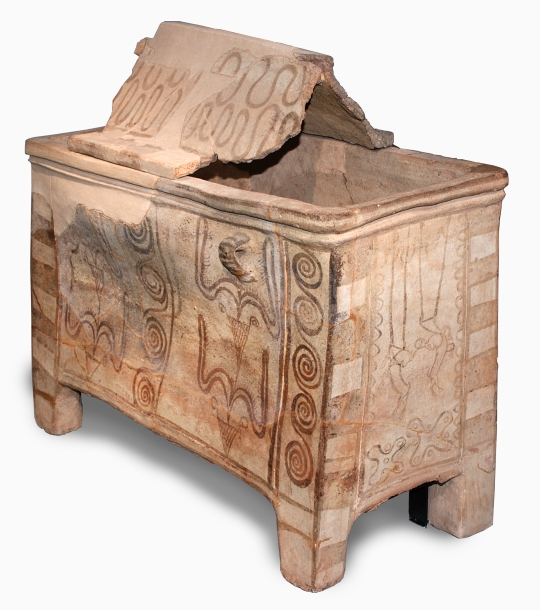Significant evidence of Minoan culture, showing both the high quality pottery art of the Aegean Bronze Age and religious ideas.
In the period when the sarcophagus was made, Crete succumbed more and more to the cultural influence of the immigrating Greeks after the final destruction of the palace of Knossos around 1400 BC. However, old Minoan (Cretan) ideas of religion and art can still be traced. The dead were buried in clay larnakes, so-called chest sarcophagi, or in clay bathtubs. In addition to strong Mycenaean motifs, the painting of the sarcophagi clearly shows Minoan forms.
The tree on the main side of the sarcophagus can be interpreted as a sacred tree, which could be connected to the Minoan tree cult or the cult of the tree goddess. The two wild goats may allude to the goats of a mountain goddess, just as the pedigree dogs may have belonged to a "lord of the dogs". The representations on the front are certainly formulaic images of Minoan religious ideas, still effective in the 14th century BC. They are likely to be interpreted in connection with death and the afterlife. The well-founded dating of the painted clay tubs and chest sarcophagi from various sites on Crete (e.g. Palaikstron, Pentamodi, Pachyammos) allow the dating of our sarcophagus to the beginning of the Late Minoan III phase (14th century BC) to be regarded as certain on the basis of stylistic comparisons. (AVS)
en











